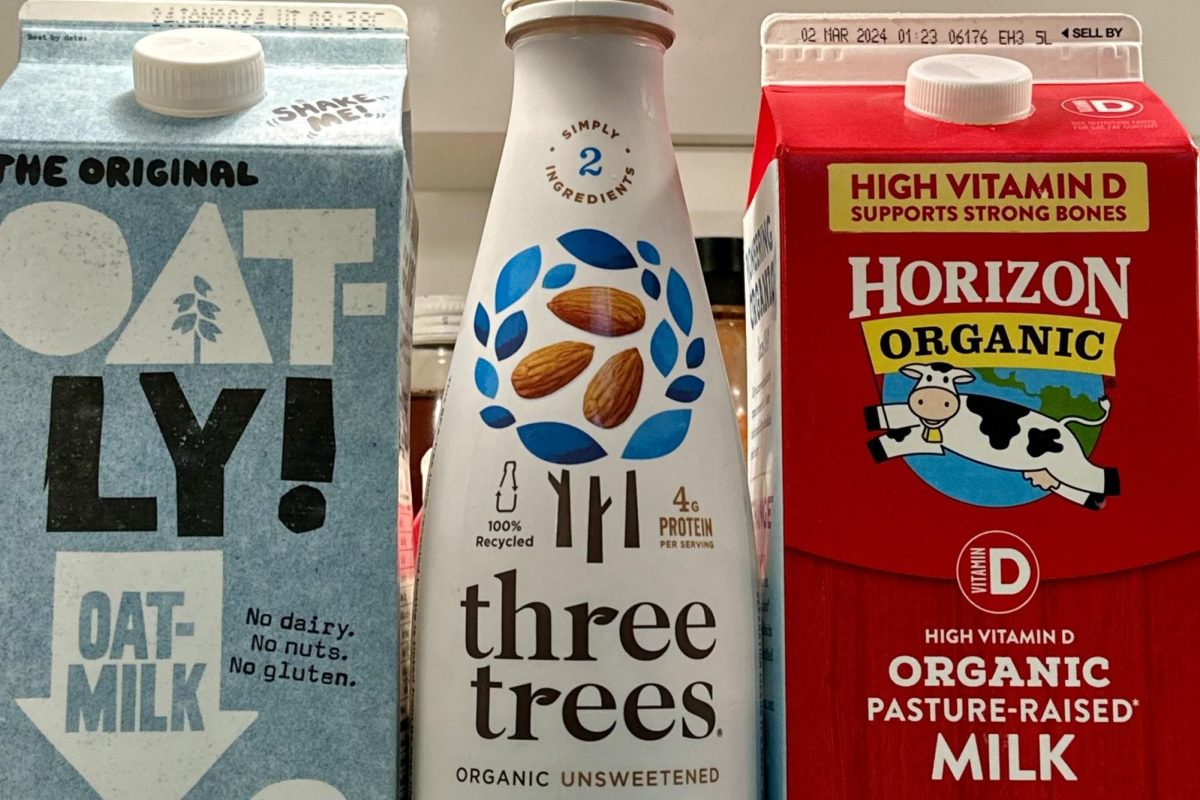“Can I get an iced latte with oat milk, please?”
Living in Los Angeles, baristas at coffee shops hear this order daily. Angelenos are known for their heavy consumption of alternative milks like oat, almond and soy milk. The U.S. alternative milk market’s estimated worth was $3.6 billion in 2023.
While a large part of the U.S. consumes alternative dairy products, consumption of dairy cow products has significantly decreased in recent years. Alternative dairy products have other health benefits such as oat milk and its high fiber contents. However, according to the FDA, alternative dairy products, with the exception of products fortified with calcium, lack the levels of calcium and vitamin D present in dairy products.
Maximizing bone health is important because bones serve many purposes. For example, they provide structure and protect organs like the heart and brain from injury.
The National Academy of Medicine recommends adolescents aged 9-18 consume 1300 milligrams — about four servings — of calcium per day. Only 15% of teenage girls nationally meet this daily recommendation. UCLA endocrine bone specialist Julie Bernthal said calcium and vitamin D are essential nutrients in maximizing bone health.
“The importance of vitamin D, in terms of bone health, is it actually allows you to absorb calcium. Without vitamin D, you can only absorb a certain, lower percentage, of calcium,” Bernthal said. “Calcium phosphates actually come together to form hydroxyapatite crystals that basically mineralize bones. That is how you get strong bones.”
Junior Julianna Hatton consumes dairy in two out of three meals as well as a dairy product for a snack each day. She also takes a vitamin D supplement daily.
“If I’m having cereal or oatmeal, I will have either traditional cow’s milk. I also drink almond milk, and I’ve been a favorite of oat milk,” Hatton said. “But I do try and shake it up because I know cow’s milk and other milks all have different benefits. I think it’s important to have a varied dairy diet.”
Seventy percent of bone mass is genetically determined and is therefore unchangeable. However, Bernthal said the remaining percentage of variability is reliant on four other factors: exercise and lifestyle, body weight and composition, nutrition and hormonal status.
“The most rapid periods of bone formation are during adolescence, particularly actually in your early teenage years. Your ability to build strong bones early on predicates your bone health over the course of your lifetime,” Bernthal said. “It’s actually thought that somewhere between 40% and 60% of your bone density is built during early adolescence. Ninety percent of bone density [is] built by the time you’re 18, so you have a really unique window to create strong bones early on that will serve you well the rest of your life.”
On average, cow’s milk contains 40% more calcium than almond milk. Bernthal said it is important to note dairy is not the only available source of calcium. Dark leafy greens, figs, seeds and rhubarb are examples of foods rich in calcium.
Bernthal said maintaining good bone health is vital in preventing osteoporosis, a condition in which bones become brittle and weak. Half of women in the U.S. over 50 develop osteoporosis. Women account for over 75% of hip fractures in the U.S., which is highly dangerous and is known to lead to several long-term complications.
“It becomes a bigger issue for perimenopausal and postmenopausal women because you lose your estrogen during that time, and estrogen is really good for bones,” Bernthal said. “Estrogen basically acts as an antiresorptive, so it slows down the breakdown of bone.”
Fitness and wellness teacher Stephanie Ferri said Archer takes a holistic approach to nutrition in its human development classes. She said the HD curriculum does not explicitly include information about specific vitamins and nutrition requirements but instead focuses on destigmatizing food and teaching students how to make personal eating choices. However, part of the fitness curriculum is focused on educating students about bone density and health.
“We talk about the overload principle, which says that when you are working out, you create a greater stress on your body. Then, your bones are going to respond by growing back bigger and stronger,” Ferri said. “That is where we get into talking about bone density and health. In middle school, we focus on the F.I.T. principle, which is frequency, intensity and time of exercising consistently. Ultimately, [the FIT principle] becomes more of a focus in upper school. For example, in 10th grade, Coach L does a whole unit on building your own training program and talking about muscle and bone growth.”
The Oracle surveyed upper school students on their daily dairy and alternative dairy consumption habits as well as their vitamin D consumption. The survey received 104 responses out of 267 upper school students, and 52% of respondents said they consumed alternative sources of dairy.
Hatton said she understands why it can be hard for adolescent girls to get the recommended amount of vitamin D and calcium. She said it can be difficult to get sunlight during the the school year and winter months. The daily recommendation for vitamin D is 600 international units or around 30 minutes of sunlight. She also believes education in school about nutrition is key.
While the California Department of Education strongly encourages all California schools to offer a nutritional education class or have nutritional education integrated in to a course, it is not required.
“There’s not enough education surrounding these vital minerals and vitamins that you need for your diet. There’s not a lot of education on well-rounded nutrition, especially in public middle and high schools. Girls are typically either making their own meals or their own food choices,” Hatton said. “I think it’s important that there’s ongoing education to let girls know that we need this much calcium and vitamins because these are things that are going to have a lasting impact on our health.”
Infogram
This story was originally published on The Oracle on January 27, 2024.




































